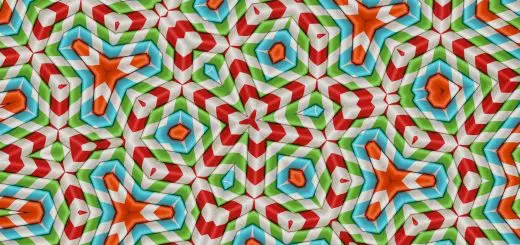Taoist Deities: Legends and Lore

Looking for more amazing products? Check out our online store and explore our collection here! Happy shopping!
Before diving in, please note: This post is for informational purposes only. If you’d like to know more about how we approach topics, feel free to check out our friendly Disclaimer Page.
Hey there, amazing readers! 
We’re committed to delivering quality posts, and your support (even just sticking around despite the ads) means everything to us. So, bear with us, and thanks for helping us keep the good vibes rolling. Now, on to the fun stuff!
TRANSLATE BUTTON AT THE END OF THE ARTICLE
Introduction to Taoist Deities
Taoist deities play a significant role in Taoism, a spiritual and philosophical tradition originating from ancient China.
These deities are believed to govern various aspects of the universe and human life, embodying virtues, powers, and cosmic forces.
Taoist worshippers seek guidance, protection, and blessings from these deities through rituals, prayers, and offerings.
From the revered Three Pure Ones to the mischievous Monkey King, Taoist mythology is rich with diverse and colorful characters that reflect the complex tapestry of Chinese culture and spirituality.
Origins of Taoist Deities
The origins of Taoist deities can be traced back to ancient Chinese folklore, mythology, and religious beliefs.
Over centuries, these deities evolved and assimilated into Taoism, shaping the pantheon that exists today.
Many Taoist deities were once historical figures, legendary heroes, or celestial beings who ascended to divine status due to their exceptional virtues, deeds, or spiritual accomplishments.
Others were personifications of natural elements, celestial bodies, or abstract concepts, serving as intermediaries between the mortal realm and the divine realm.
The Three Pure Ones
The Three Pure Ones, also known as the Celestial Worthy of Primordial Beginning, the Celestial Worthy of Numinous Treasure, and the Celestial Worthy of the Tao and Its Virtue, are the highest deities in Taoism.
They represent the three fundamental aspects of the Tao: creation, preservation, and destruction.
The Three Pure Ones are often depicted as elderly sages or celestial monarchs sitting on thrones in the heavens.
They are revered for their wisdom, compassion, and divine authority, overseeing the cosmic order and guiding humanity towards spiritual enlightenment.
The Eight Immortals
The Eight Immortals are a legendary group of Taoist deities who possess supernatural powers and immortality.
Each Immortal has a distinct personality, appearance, and special ability, symbolizing different virtues and life experiences.
From the eccentric Han Xiangzi to the eccentric Zhang Guolao, the Eight Immortals embody a diverse range of archetypes and teachings in Taoism.
They are revered as protectors, healers, and benevolent spirits who intervene in the affairs of mortals and bring blessings, prosperity, and longevity.
The Four Heavenly Kings
The Four Heavenly Kings are powerful deities who guard the four cardinal directions and protect the world from evil spirits, natural disasters, and chaos.
Each Heavenly King commands an army of celestial beings and wields unique weapons to defend their domain.
Known as Dhritarashtra, Virudhaka, Virupaksha, and Vaishravana, the Four Heavenly Kings are revered as symbols of strength, justice, and guardianship in Taoism.
They are often depicted in temples, shrines, and artwork as fearsome warriors adorned in armor and crowns, standing vigilantly against malevolent forces.
Mazu, Goddess of the Sea
Mazu, also known as Tin Hau or Tianhou, is a revered goddess in Taoism who presides over the seas, sailors, and fishermen.
Born as Lin Moniang in the 10th century, Mazu achieved divinity through her miraculous powers of healing, prophecy, and protection.
She is worshipped by coastal communities and seafarers worldwide, seeking her blessings for safe voyages, bountiful catches, and calm waters.
Mazu is often depicted as a compassionate and serene figure with a crown, robes, and a lotus flower, embodying the virtues of mercy, compassion, and maternal love.
Guan Yin, Goddess of Mercy
Guan Yin, also known as Kuan Yin or Avalokiteshvara, is a beloved goddess in Taoism who embodies compassion, mercy, and infinite love.
As the Bodhisattva of Compassion, Guan Yin is revered for her ability to hear the cries of the suffering and offer solace, healing, and guidance.
She is often depicted as a serene figure with a gentle smile, wearing flowing robes and holding a willow branch or vase of nectar.
Guan Yin’s devotees pray to her for protection, forgiveness, and blessings, believing in her power to alleviate suffering and grant wishes.
The Green Dragon and White Tiger
The Green Dragon and White Tiger are mythical creatures in Taoism that symbolize cosmic forces, elemental powers, and the balance of yin and yang.
The Green Dragon represents the east, wood, spring, and yang energy, while the White Tiger symbolizes the west, metal, autumn, and yin energy.
Together, they embody the cyclical nature of the universe, the harmony of opposites, and the interplay of forces in Taoist cosmology.
The Green Dragon and White Tiger are often depicted as celestial beings, guardian spirits, or auspicious symbols in art, architecture, and folklore.
The Kitchen God
The Kitchen God, also known as Zao Jun or Zhang Lang, is a domestic deity in Taoism who oversees the household, hearth, and family relationships.
Traditionally honored during the Chinese New Year, the Kitchen God is believed to report the family’s behavior to the Jade Emperor in heaven.
Offerings of food, incense, and prayers are made to appease the Kitchen God and ensure blessings, prosperity, and harmony in the home.
The Kitchen God is often depicted as an elderly man with a long beard, wearing traditional robes and holding a scroll or a ladle, symbolizing wisdom, abundance, and nourishment.
The God of Wealth
The God of Wealth, also known as Caishen or Zhao Gongming, is a popular deity in Taoism who governs prosperity, abundance, and financial success.
Worshipped by business owners, entrepreneurs, and individuals seeking wealth, the God of Wealth is believed to bring good fortune, luck, and riches to his devotees.
Offerings of incense, fruits, and money are made to the God of Wealth during festivals, business ventures, and auspicious occasions.
He is often depicted as a jovial figure carrying a golden ingot or a money bag, symbolizing wealth, generosity, and blessings.
Legend of the Monkey King
The Monkey King, also known as Sun Wukong or Hanuman, is a legendary figure in Taoist mythology who embodies bravery, mischief, and supernatural powers.
Born from a stone egg on the Mountain of Flowers and Fruit, the Monkey King acquires incredible strength, agility, and magic abilities through Taoist practices.
He accompanies the Buddhist monk Xuanzang on a journey to retrieve sacred scriptures from India, facing numerous challenges, demons, and deities along the way.
The Monkey King’s adventures are a central theme in the classic Chinese novel "Journey to the West," inspiring countless adaptations, films, and pop culture references.
Worship and Rituals of Taoist Deities
Worship of Taoist deities involves a variety of rituals, ceremonies, and practices aimed at honoring, appeasing, and communing with the divine.
Taoist worshippers visit temples, shrines, and sacred sites to make offerings of incense, fruits, flowers, and prayers to the deities.
Rituals such as chanting, meditation, divination, and alchemy are performed to cultivate spiritual awareness, healing, and enlightenment.
Taoist priests and mediums act as intermediaries between the mortal realm and the spirit world, channeling divine messages, blessings, and guidance.
Festivals, processions, and pilgrimages are organized to celebrate and honor specific deities, seeking their protection, blessings, and miracles.
Conclusion
Taoist deities are an integral part of Taoist spirituality, mythology, and cultural heritage, embodying virtues, powers, and cosmic energies that influence human life and the universe.
From the supreme Three Pure Ones to the mischievous Monkey King, each deity represents a facet of Taoist teachings, beliefs, and practices.
Through worship, rituals, and devotion, Taoist followers seek to establish a connection with these deities, seeking guidance, protection, and blessings in their lives.
The legends and lore surrounding Taoist deities reflect the rich tapestry of Chinese mythology, folklore, and religious traditions, offering insights into the spiritual journey of humanity towards enlightenment and harmony with the cosmos.

The Enlightenment Journey is a remarkable collection of writings authored by a distinguished group of experts in the fields of spirituality, new age, and esoteric knowledge.
This anthology features a diverse assembly of well-experienced authors who bring their profound insights and credible perspectives to the forefront.
Each contributor possesses a wealth of knowledge and wisdom, making them authorities in their respective domains.
Together, they offer readers a transformative journey into the realms of spiritual growth, self-discovery, and esoteric enlightenment.
The Enlightenment Journey is a testament to the collective expertise of these luminaries, providing readers with a rich tapestry of ideas and information to illuminate their spiritual path.
Our Diverse Expertise
While our primary focus is on spirituality and esotericism, we are equally passionate about exploring a wide range of other topics and niches 

To ensure we provide the most accurate and valuable insights, we collaborate with trusted experts in their respective domains 
Our blog originally focused on spirituality and metaphysics, but we’ve since expanded to cover a wide range of niches. Don’t worry—we continue to publish a lot of articles on spirituality! Frequently visit our blog to explore our diverse content and stay tuned for more insightful reads.
Hey there, amazing reader! 
Check out our store here and take a peek at some of our featured products below! Thanks for being awesome!











